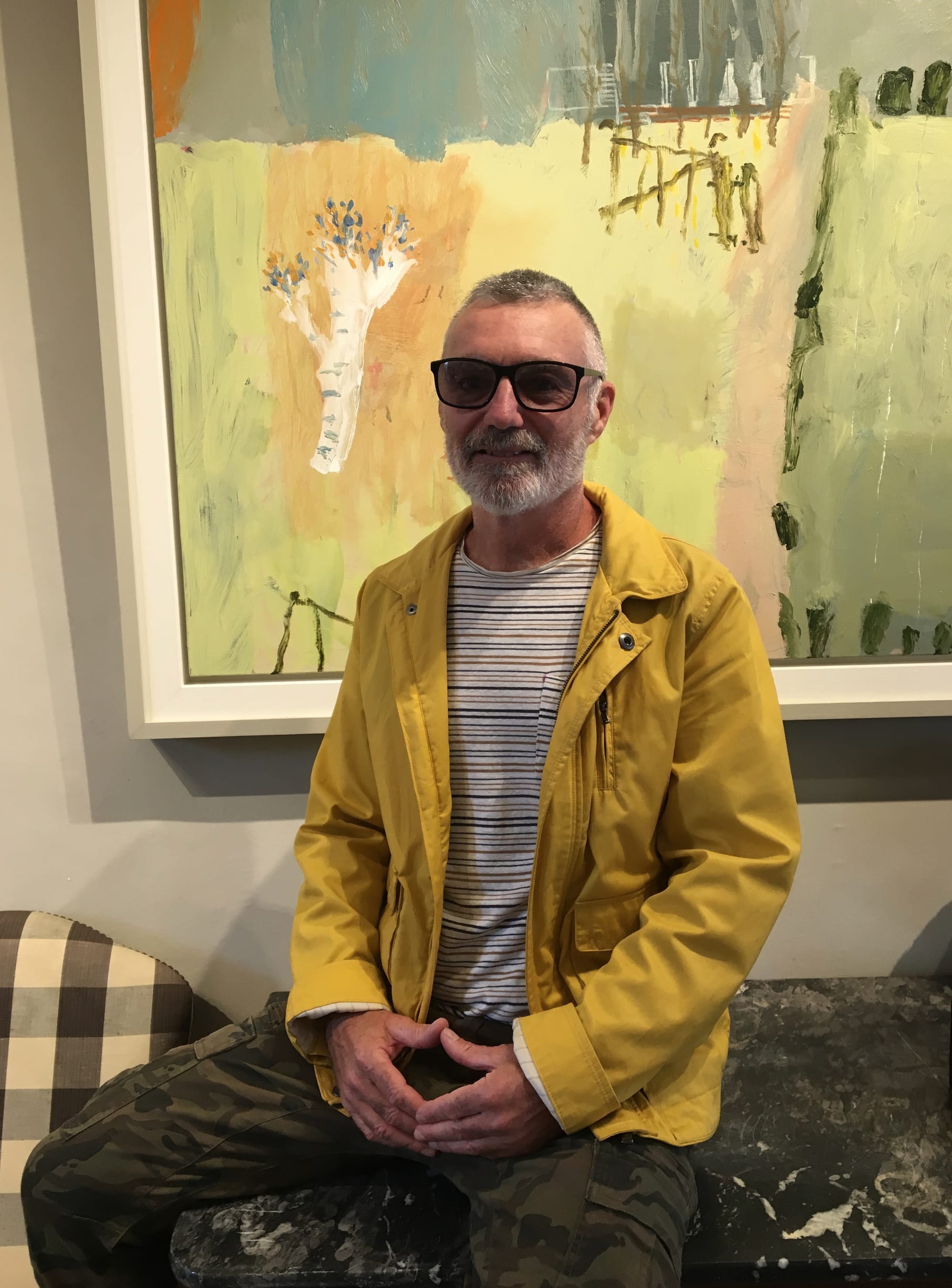
Driven to create from an early age, David Pearce always knew that he would become a painter. Whilst living in Cornwall, and with no formal instruction or training, David was influenced by the St. Ives artists and drew inspiration from the formidable painter and art educator, Roy Oxlade (1929-2014). David explains that his subject matter is one of the least important aspects of his painting, “it’s not what I paint - it’s how and why”. He adds that he paints with “a primitive directness, using seemingly simple compositions and just enough complexity and confusion to hold the attention”. David has an abstract but painterly approach to his work and his understanding of colour is integral to the overall design of the picture. Little attempt is made to disguise the layers lurking beneath the final application of paint and his work never fails to make everything around us look intriguing.
For over two decades, David’s work has been widely exhibited in both Europe and America. His work is on permanent display in Milwaukee Art Museum as part of the artwork bequeathed from The Anthony Petullo Collection of Self-Taught and Outsider Art.

Wild Beans, mixed media on linen, 80 x 100 cms
Recently, David drove up from Cornwall in order to deliver a large number of paintings for his forthcoming show. He was also en route to the Royal Academy with two very fine submissions for this year’s Summer Exhibition (his work was accepted in 2015, 2016 & 2017). In 2018, he was included in the John Moores Painting Prize, the UK’s most important art prize at the Walker Art Gallery, Liverpool.
As a self-taught artist, you have much in common with Alfred Wallis from the St. Ives school - can you recall your first real source of inspiration?
I was first inspired by my art teacher in secondary school, Bill Austin. I would visit his studio in nearby St Mabyn after school or at weekends. I recall a visit we took together to Tate St Ives where Bill talked passionately about the paintings. He taught me to really look; to look closely for myself and see the true colour, observe the brushstrokes and read compositions.
You’ve lived in Cornwall for most of your life. Is this the place that chiefly informs your work?
I think that most situations/environments will affect my work in some way. I enjoy being out in nature, in the sea and walking in woodlands. As someone familiar with being surrounded by nature I will often spot birds, plants growing out from cracks in buildings - even in the middle of London. I think as an artist I am always tuned into interesting shapes, colours and the light.
Your paintings incorporate a number of recurring images: trees, streams, crooked gates and blackbirds … can you reveal what these mean to you and how do you determine your compositional starting point?
Each morning I start the day with a walk and as the seasons change, the light, weather and plants change too. Certain aspects are present for a little longer - long enough for me to put them into my paintings. At home each morning as I draw the curtains, a blackbird flies up to my bedroom window. He knows that as soon as I get downstairs, after the kettle goes on, I’ll open the door and throw a few sultanas down for him. He has featured in quite a few of my paintings.
Do you ever have more than one painting underway at any one time?
Paintings evolve over time; some take months, some even years. In my studio I do have several paintings in various stages. Whilst the paint has time to dry, I’ll work on another. Some paintings are resolved easily, others not so. I often move the painting to a wall somewhere prominent so I see it repeatedly throughout the day. It may sit there for weeks and one day, after much analysis, I’ll have concluded what it needs and take it back to my studio and re-work it. The paintings are organic and many layers are added over time. They have a history and I feel it is important and integral to the finished piece that some of these earlier marks are still visible in the finished work.
How would you describe your painting style and how would you put into words the colours you use?
I try not to label my painting style as it feels restrictive. I suppose I use the paint to create the interest rather than let the picture dominate. Paint for me means surface, texture, opacity, mark-making, colour – these are far more important than a realistic representation. After all, we have cameras for that and paint is not two dimensional.
On your recent trip to London you were able to visit a number of exhibitions. If you could recommend just one of them which one would it be and why?
I visited the Bonnard exhibition at Tate Modern which was delightful. His use of colour is remarkable in combination with both thick and thin paint. My focus is drawn to the patterned areas within the works that deliberately distort the perspective, making them far more abstracted. Of course, with simple recognisable images the paintings are brought together and make sense - but these areas have wonderful ‘paint’. There was also a fantastic exhibition of Bruce McLean’s work at the Bernard Jacobson Gallery - huge canvases, lots of black paint and great textures.

David Pearce in front of Hidden (in the Trees), mixed media on linen, 120 x 150 cms
Since writing this blog, we have just heard that David's works, 'Host' and 'Shield', have been selected for the Royal Academy Summer Exhibition 2019.
